In following with the aging of the garage door, I wanted a metal side door that would show its age, perhaps a few dents. The easiest material to use would be plastic. I cut two rectangles of 0.04″ styrene sheet. Using a lighter, I heated up random sections and pressed in with a butter knife to create dents and an awl to create dings.
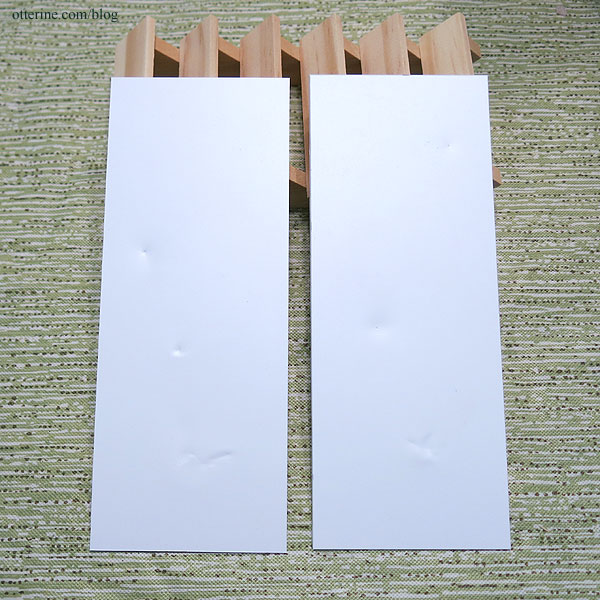
I used 3mm styrene to make an internal structure between the two rectangles to make a hollow door. You can see the scorch marks on the back side from the lighter.
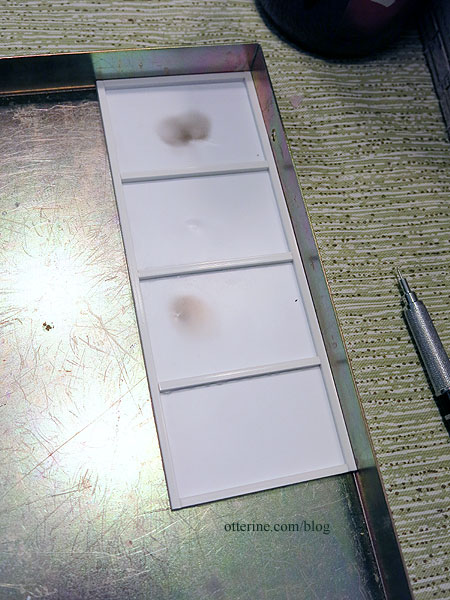
I started with grey primer to grab the plastic. I’m showing the exterior only until the end since it was the same process on both sides.
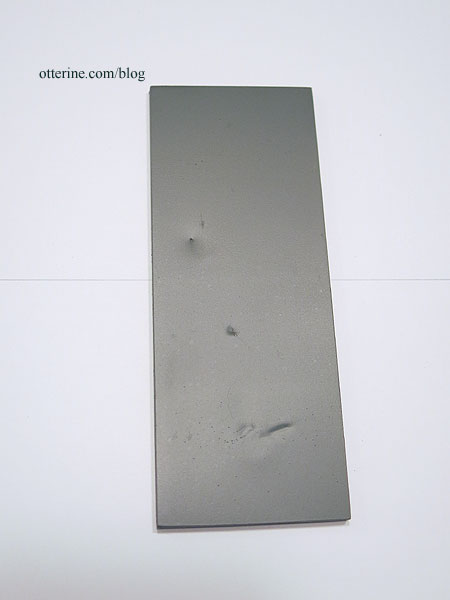
I then painted both sides with acrylic paints to create corrosion.
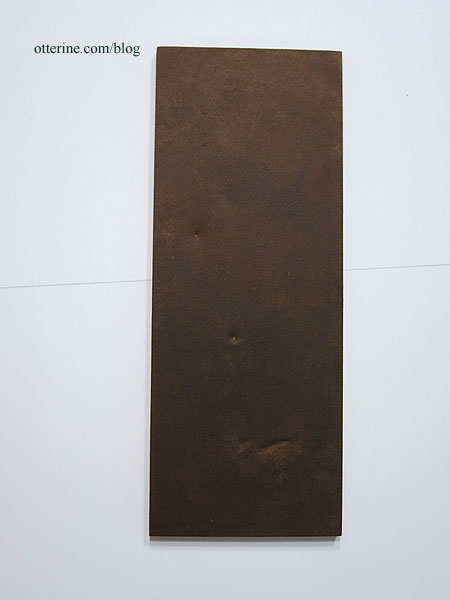
I masked random areas with Winsor & Newton Masking Fluid. This is a pricey fluid used for watercolor painting; it covers any space you want to remain white on a painting.
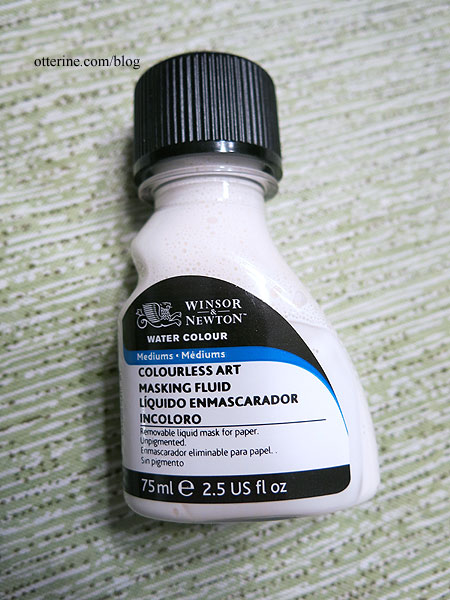
It dries clear, and you paint over it.
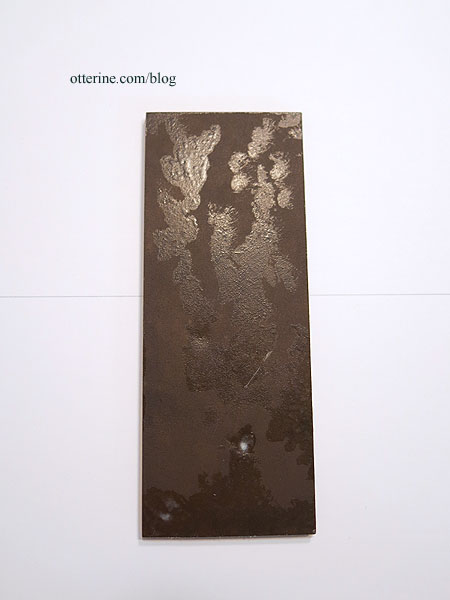
I started with gloss Cherry Red by Krylon. I used an eraser to lift the rubbery masking after the paint dried.
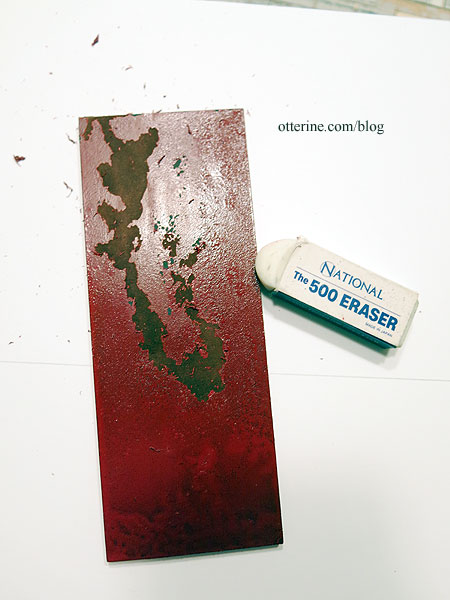
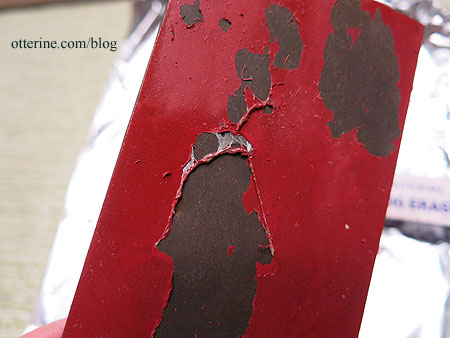
Since the paint was dry to the touch but not yet cured, it also marred the gloss finish — an added bonus. No new paint on this old door.
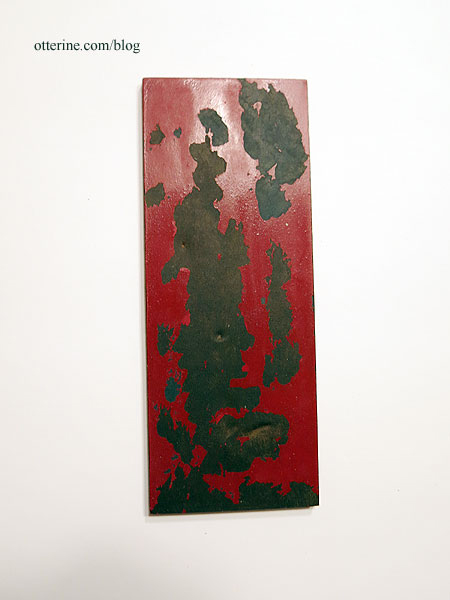
I applied masking fluid again, following the initial patterns loosely.
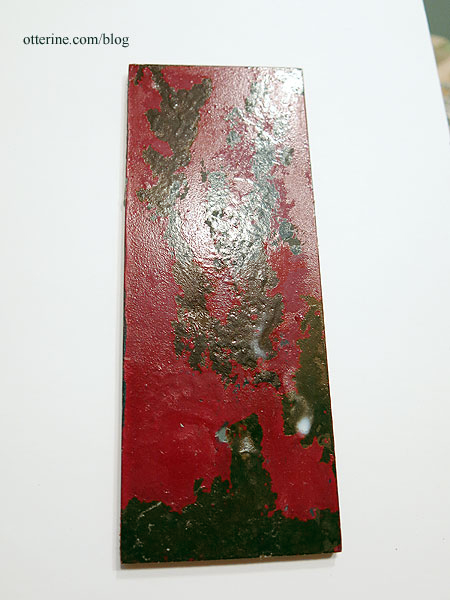
The next color was Rust-Oleum Deep Forest in satin finish, which has a lot of blue tones to it.
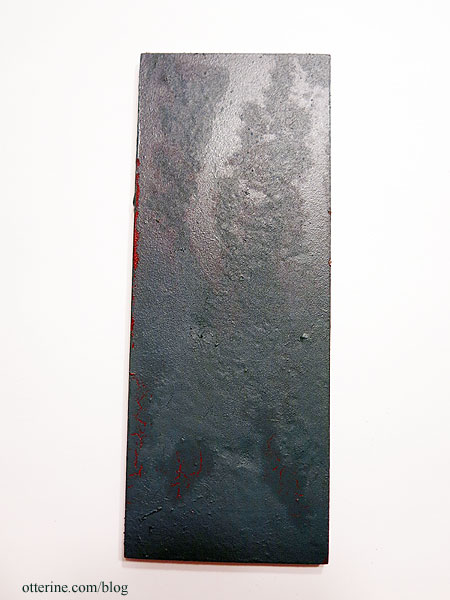
Removing masking…and you can see the red and corrosion underneath.
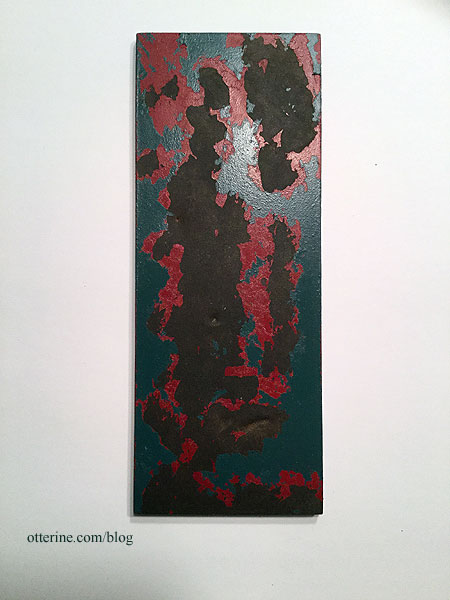
Racing Green by Tamiya was the next color, then final masking. The white portions are where the masking fluid is still drying.
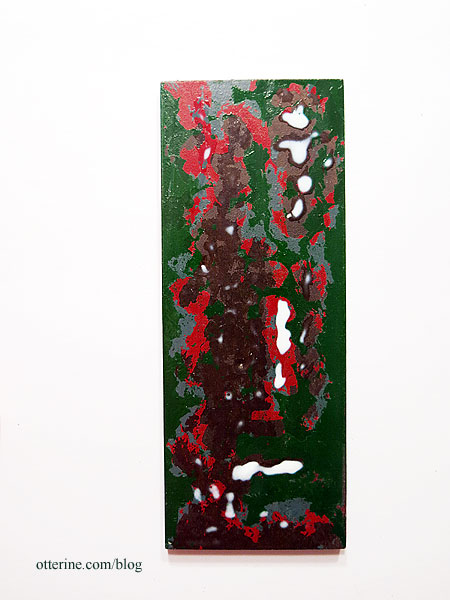
This last time, some of the paint lifted to the grey primer. I used acrylic paints to reapply the corrosion layer over the grey primer areas and to dirty the bottom and lead edge where hands would be constantly touching the door.
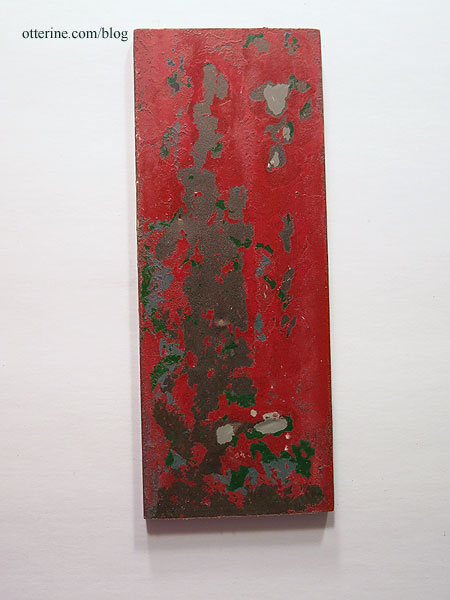
I was originally going to go with a grey door, but how boring. haaaaaa! The exterior was finished with gloss Cherry Red by Krylon since I liked how it “aged” the first time around. I barely waited for the paint to dry this time before attacking the finish and removing the masking. I wanted a truly battered door. :D
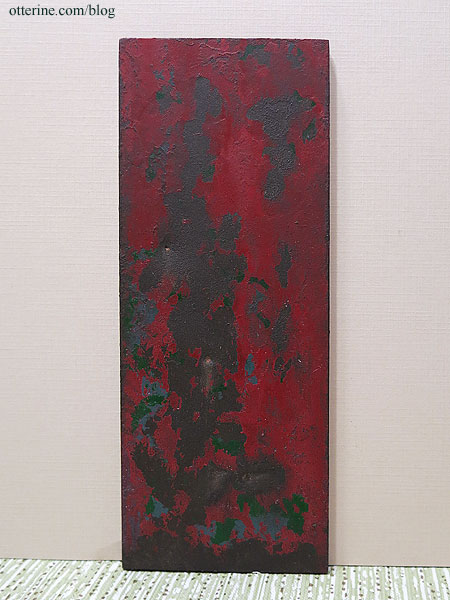
I love the way the dents and dings turned out.
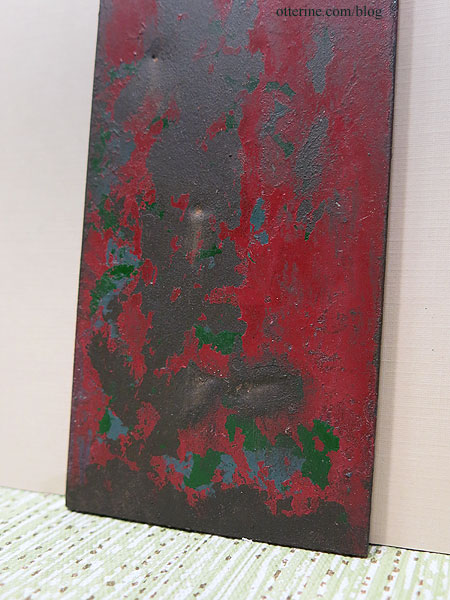
I went with Rust-Oleum Deep Forest for the interior. I masked very little on the interior after the third paint coat since it would have been more protected from the elements but still subject to wear and tear.
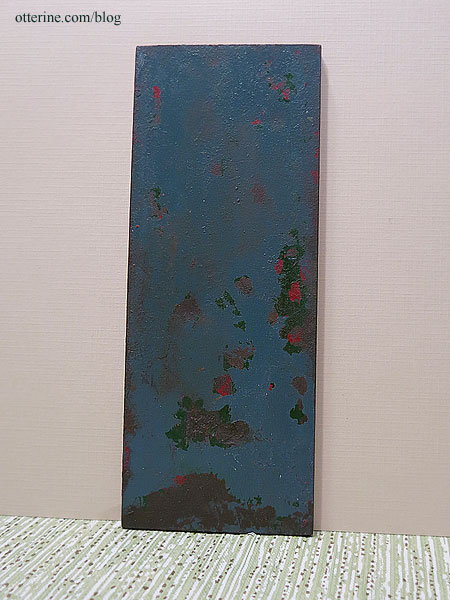
The bottom gets the most abuse from perhaps being kicked closed or ramming into things inadvertently left in its path over the years.
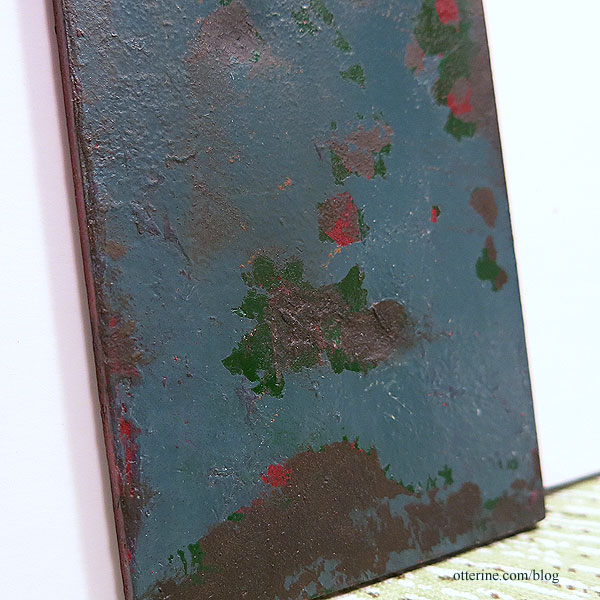
Spray paints have recommendations such as applying second coats within 2 hours or waiting for 48 hours to prevent crazing (wrinkling). Since I was within that “don’t spray” time, I achieved some crazing. Often when I try to get crazing, I can’t, and when I want a pristine finish, I get crazing. At least it worked as intended this time.
Now to build a frame….






































